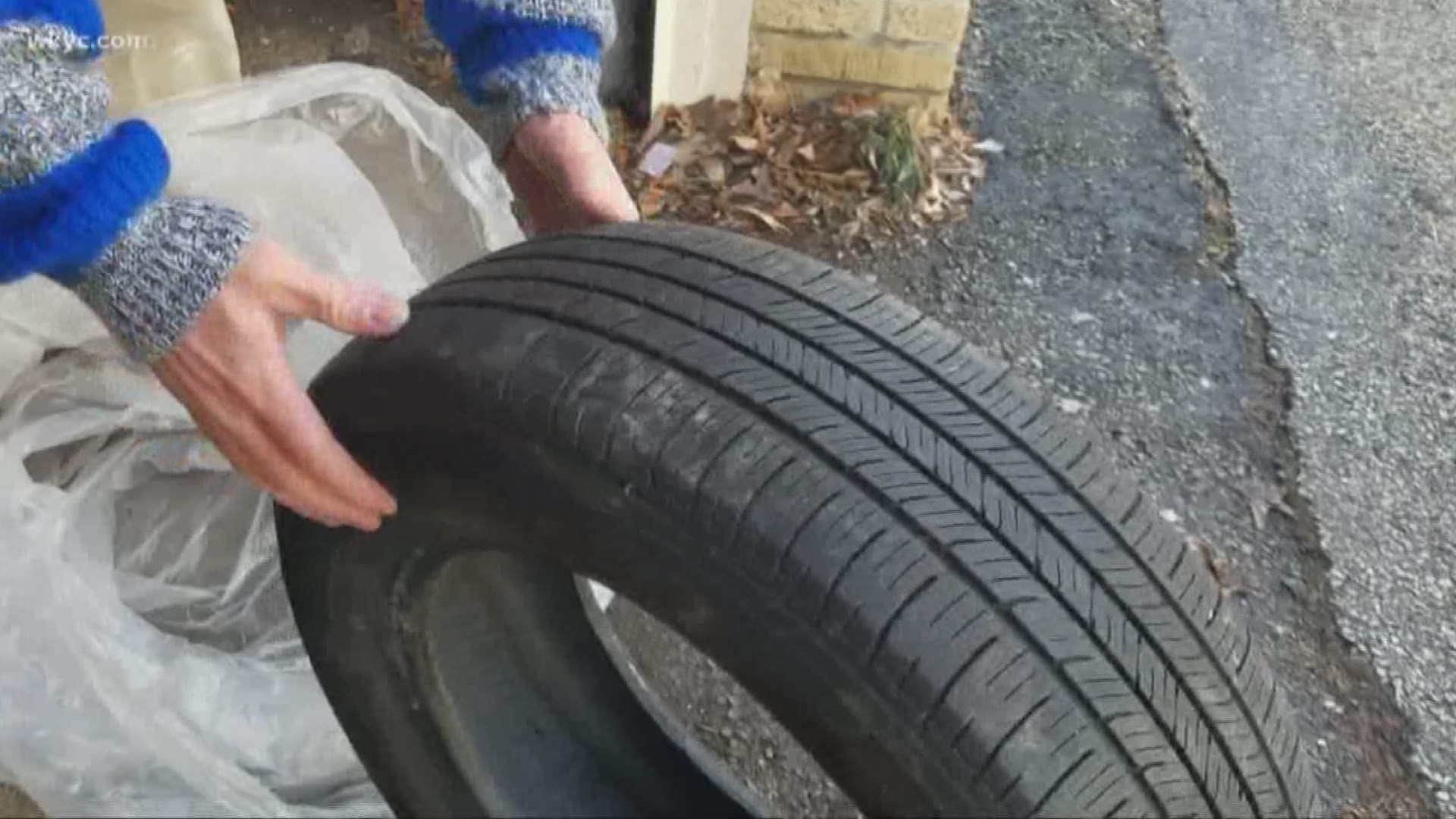Tread lightly if you rely only on tread depth to decide when to replace your tires. If the tread passes the so-called penny test, then most people assume the tire is still safe. Stick the penny in the tire's grooves, and if you don't see Lincoln's head, then the tire still has life regardless of the age of the tire.
But safety experts and most car makers say not so fast. They argue that old tires are dangerous regardless of tread depth.
"Six years or older, a tire should be removed from service and replaced regardless of tread," say Sean Kane, president of Safety Research & Strategies Inc. Kane's organization provides research and analysis on injuries connected with a variety of products including tires.
Managers at Conrad's Total Car Care won't sell old tires.
"They won't be in our inventory. They're not in our system. They're not in our structure," said Sam Jakabcic, General Manager of Retail.
"If a tire is more than six years of age, there is not a manufacturer out there who will warranty that tire," said Jon Gebler, store leader at Conrad's in Solon.
Channel 3 News found eight and 10-year-old tires on cars in Cleveland parking lots. We also bought old tires from Cleveland Tire & Wheel, a used and new tire dealer in the Collinwood neighborhood. One tire had exceptionally good tread, but was 20 years old. Tires that old are dangerous, experts say, because the rubber compounds break down and cause cracking which can lead to blowouts and loss of control of your vehicle. Kane compares old tires to a rubber band which cracks as you stretch it.
"It can fail very rapidly," Kane said
Did employees try to hide the date when the tire was made? They told the Investigator Tom Meyer they didn't know how to tell the age of a tire.
"Leave the establishment, please," an employee told Meyer.
The production date is located on the sidewall of a tire along with a bunch of other numbers. Consumers should look for the last four digits of the DOT number. The first two numbers indicate the week the tire was made. The last two numbers represent the year the tire was made. So, a stamped date of 1304 shows the tire was made the 13th week of 2004.
To make matters even trickier, tire makers are only required to put the date on one side. If the number is on the other side of the tire, you'd have to crawl under the car with a flashlight to read the date.
"It's just not deceptive. It's intentionally designed to make it difficult for the consumer," said Kane.
Jury Mirceta of Rocky River thought he got a good deal on a set of tires when he was told he was buying tires that were practically new at West of Cleveland Used Tires at 65th Street and Clark Avenue.
When he began driving the car, it pulled hard to the right so he brought it to a mechanic to inspect. He was told the tires were practically new but later discovered they were nearly 10 years old and probably had three to four months left on them. Mirceta had a blowout after driving only 9,000 miles in 10 months.
"I heard a loud pop. I thought I ran over something. I'm more upset than anything. I felt I was bamboozled," Mirceta said.
Mirceta knows it could have been a lot worse. A federal study in 2017 found 738 fatalities in tire-related crashes.
"People should not die from these types of situations, yet it continues to happen," Kane said.

